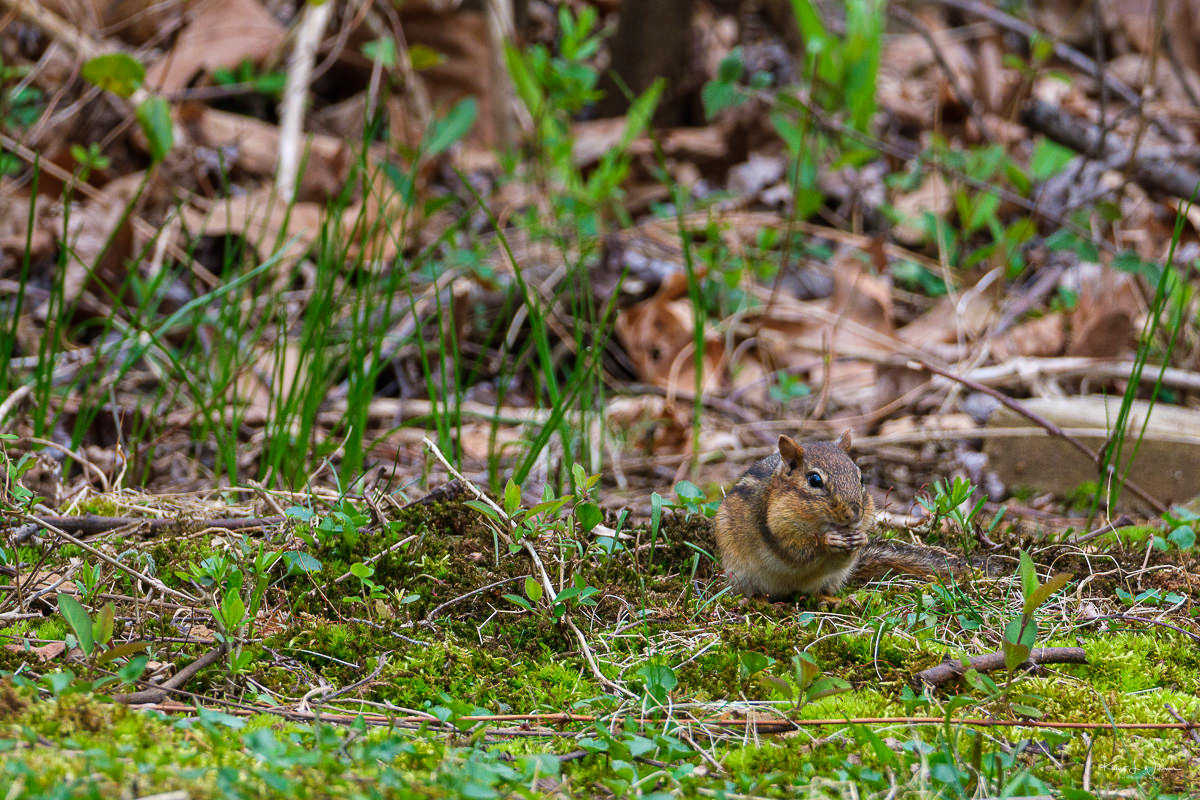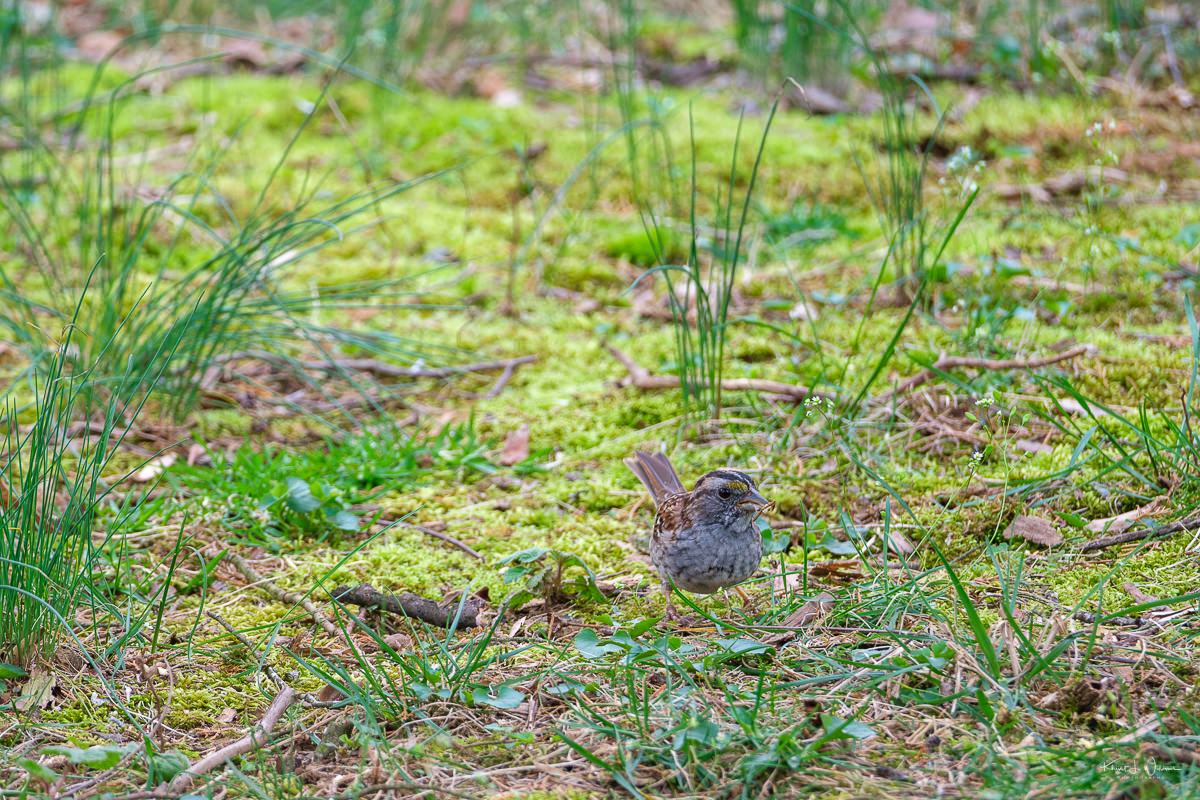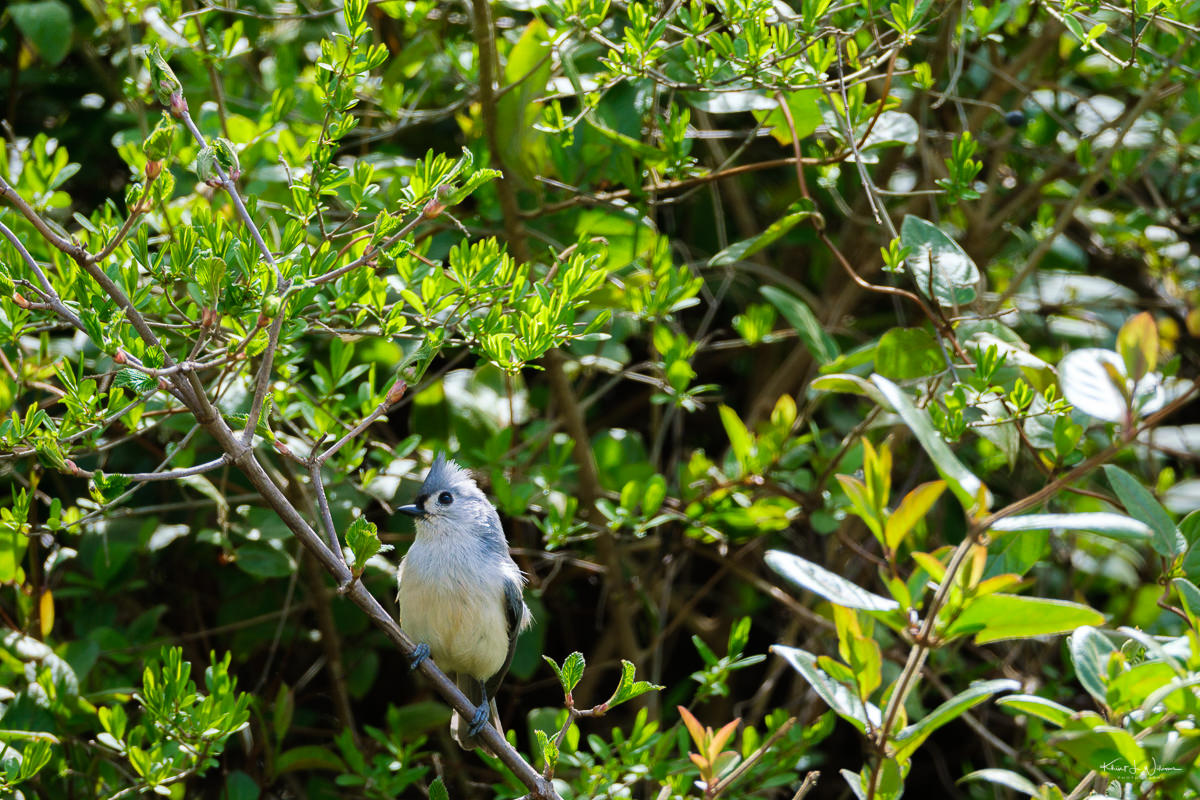I don’t think I have photographed a chipmunk before. A long time ago I planted tulips and other bulb plants in the garden bed at the front of our home. Whenever I was in the garden cleaning up dried leaves and and pulling weeds I would see a chipmunk scoot across the driveway from our yard to the neighbour’s. I have not seen any on that side of the house. I think they ate all of the bulbs as the tulips have not grown in years.
I noticed a chipmunk scampering around on the deck in the rear of our home but this is the first time I have seen it in the open. It was easing something. I assume it was berries. It scampered around on the soft green moss under the trees before heading for the fence line to forage in the dried leaves.

The dark brown to blackish stripes on the back and sides help to camouflage the chipmunk. Once he started scampering around the leaves at the fence line marking the forest edge it became hard to find it for the photograph.
Eastern chipmunks are listed as a species of Least Concern according to the IUCN Red List.



